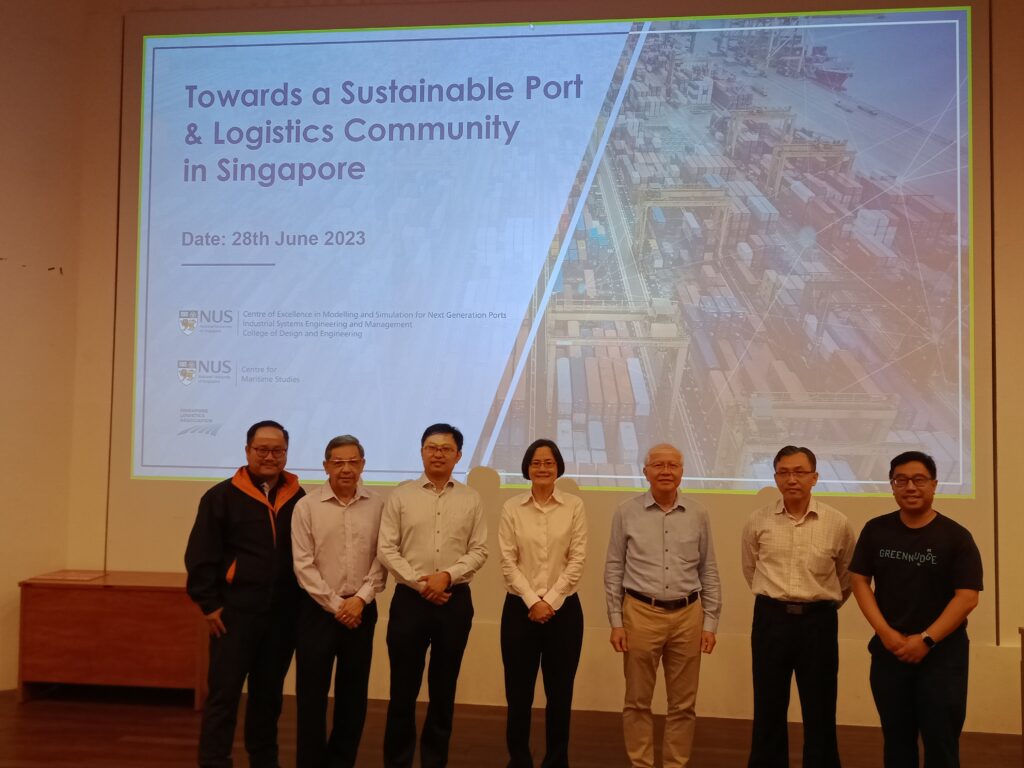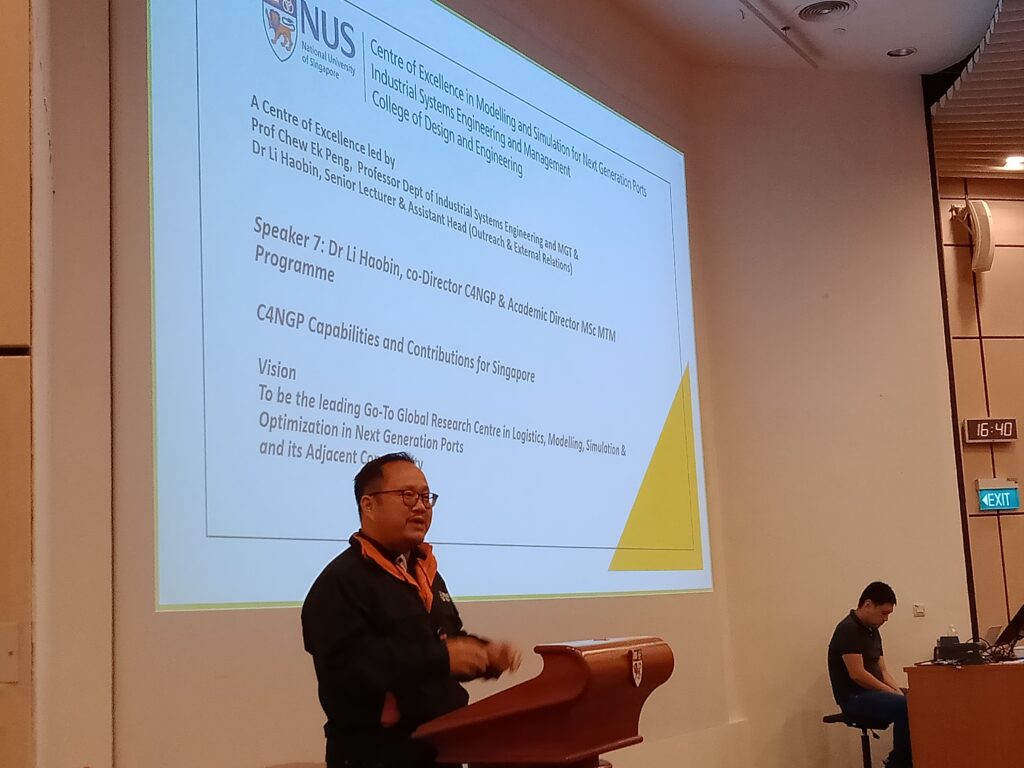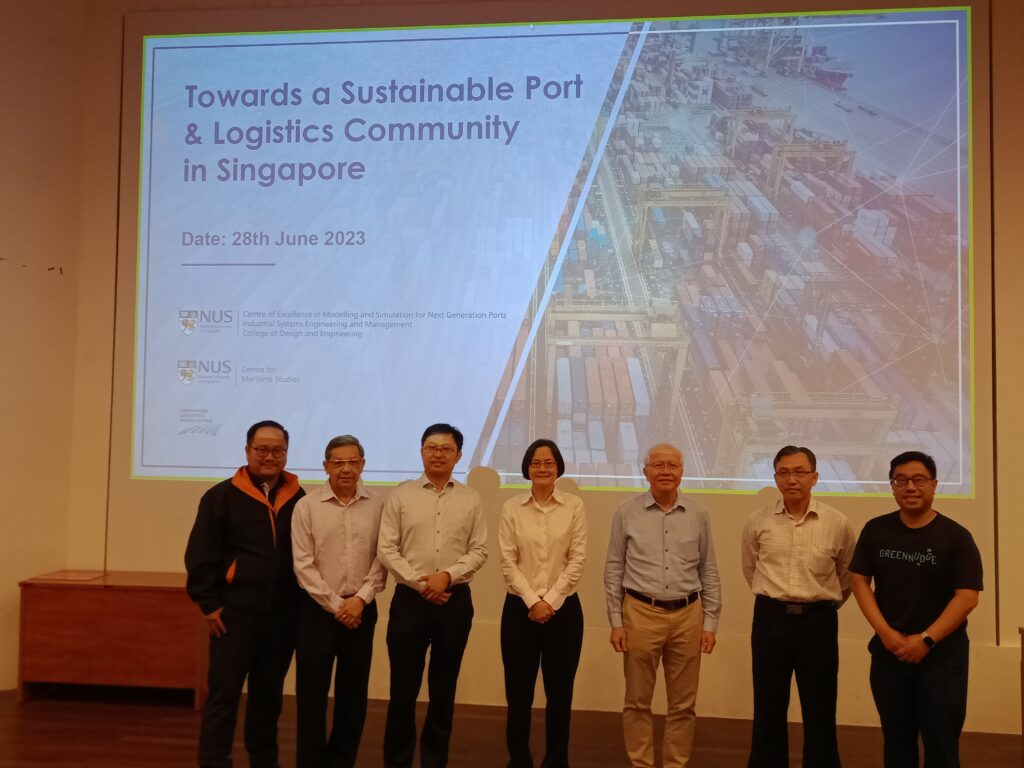

C4NGP completed its first five-years of research from 2018 to 2022. Looking back on the past five years, we have achieved a lot, but there are also many areas worthy of review and improvement.
Six years ago, when I just returned to NUS from A*STAR IHPC, together with my two supervisors, Prof Chew Ek Peng and the late Prof Lee Loo Hay, we set-up C4NGP. At that time, we had just started using the O2DES simulation modelling framework for the design study of Finger 4 at the Tuas Next Generation Container Port Terminal. Although, at that time, I had studied and researched the field of simulation for nearly ten years, it was never an easy task to apply the simulation methods in textbooks and research papers, to construct and study a real mega container terminal. Many practical problems were not covered in existing theories.
In our past studies and research, we emphasized on how to find optimal solutions faster in a given system or mathematical problem. However, when we faced the design drawings of the Tuas Terminals and the complex operating rules introduced by PSA, our familiar mathematical problems disappeared. Instead, there were a series of interdependent decision problems, spread over a longer time axis. What we needed to pay attention was not the decision-making at a specific time point, but the entire port construction and development process in the next 20, 30 years or even longer. And only then, we can then use well-known optimization methods to find the most satisfactory solutions and designs.
The initial starting stages of C4NGP were tough. Although my two supervisors have rich experiences in the field of maritime affairs and ports, and for myself and my researchers, from simulation and optimization methods to actual research on maritime and port issues, the knowledge gaps which needed to be understood and mastered were large. It was even more impossible for us to fully grasp the practical experience in such a short period of time, summed up by industry experts in one or two decades. In particular, our team rapidly expanded from a research group of a few people to a research center with more than 20 researchers and IT staff.
As the name of our Research Centre “Modeling and Simulation” suggests, simulation modeling methods have been the focus of our research breakthroughs for the past five years. The research questions we focus on include: (1) How to express the dynamic and uncertain environments during decision-making processes, scientifically and accurately, and use it to verify the feasibility and quality of decisions? (2) How to further improve the quality of decision-making under such environment? (3) How to apply these methods to large-scale industrial systems, with thousands of component elements? (4) How to efficiently implement our solutions and make the most accurate and highest-quality decisions in a limited time frame, especially in a real-time environment?
For the above reasons, in the past five years, we have continuously improved and developed our O2DES simulation framework by drawing on the advanced simulation modeling experiences of various universities and research institutions from around the world.
This modeling method has gradually been recognized by the simulation community. In December 2022, the prestigious Winter Simulation Conference came to Asia for the first time and was held in Singapore. The C4NGP team, together with Huawei Noah’s Ark Lab, hosted the “Simulation Challenge” competition. For the first time, we proposed this hybrid simulation formalism, allowing scholars from all over the world to propose their own intelligent methods for AGV control in logistics warehouses based on our simulation framework. Drawing on the positive response of the Challenge, our team was invited once again to organize a new “Simulation Challenge” session, at the next Winter Simulation Conference to be held this year in 2023, in Texas USA in December, with an application on the semiconductor fabrication process. This time, we have co-organizers from a wider community, which include Exeter University from the United Kingdom; Peking University from China; Korea Advanced Institute of Science & Technology (KAIST); with industrial sponsorship from Micron Semiconductors.
Five years ago, when most academics and researchers cast their eyes on traditional Artificial Intelligence, machine learning; and data analytics, C4NGP took the lead in proposing the concept of digital twins of industrial systems. We believe that only by mastering simulation modeling methods and scientifically and accurately describing the rules of system dynamic changes, can we expand the ability of “data analytics” to a wider scope. With simulation modeling tools, data is no longer flat information on paper or screens, but higher-dimensional information that changes according to specific rules on the time axis. With simulation modelling, we do not need to rely on existing or historical data only, but can look into future scenarios that have not yet occurred. We can actively generate the data we need to explore in the virtual world, summarize knowledge and rules from the future, and then apply them back to the present, to understand about the future. In our view, this is the most advanced form of artificial intelligence development.
As industrial and system engineers of NUS, we are duty-bound and determined to make this technology take root in Singapore and apply it to the most important industrial system in Singapore – the port logistics system, so this is the most original motivation for the establishment of C4NGP.
In Singapore, we already have the best universities in the world. NUS and the Department of Industrial Systems and Management have one of the best scholars in operations research; data analytics and optimization. In C4NGP, as reflected in the name of our research center “Center of Excellence”, we hope to develop the best simulation modeling methodologies in the world here. Because, only by relying on the ability of simulation modeling, we can make the best operations research; data analytics and artificial intelligence methods take place and sprout in realistic; complex; changeable; and unpredictable industrial systems.
It is insufficient to rely on C4NGP alone to train future talents. Two years ago, leveraging on the practical experience and knowledge accumulation of C4NGP, ISEM Department and NUS Centre for Maritime Studies (CMS), a joint Master of Science degree programme in Maritime Technology and Management (MSc MTM) was launched. It is the first master’s programme in Singapore that integrates fundamental maritime industry knowledge and applications with digital technologies and data analytics.
I would also like to thank our industry partners for providing valuable internship opportunities for our full-time students under this programme. At NUS, our teaching staff, including myself, are doing our best to teach students the theoretical methodologies we are familiar with, as well as the practical experience accumulated in our research projects under CMS and C4NGP. We are also supervising students for their internship module, actively understanding the latest problems faced by companies and guide students to apply what they have learnt from our courses and develop new solutions.
Among the graduates of the past two semesters, a considerable number of students have been hired by maritime companies in Singapore. The MSc Programme in MTM allows us to transform our learning and research experience in C4NGP, into higher productivities and value-add for our maritime and port community in Singapore.
We also actively introduce the maritime and port community to undergraduate students in NUS. Every year, C4NGP also hires “student research assistants” from amongst our undergraduate students majoring in Industrial Systems Engineering and Management. In addition to working on projects, we also encourage and guide students to participate in entrepreneurial competitions such as Pier71 Smart Port Challenge, to transform their innovative ideas into business plans. We also selected some sub-topics from our projects in C4NGP and extracted them into relatively simple forms, and assigned them to undergraduate students as Final Year Project topics. Good students will be invited to join C4NGP and employed as research engineers or apply for a research programme in ISEM.
In addition to ISEM students, we also introduced systems modelling methodologies to more than 1,600 undergraduate students of all engineering and architecture majors in NUS every year, through the Common Core Module course Systems Thinking and Dynamics of the School of Design and Engineering (CDE). We invited C4NGP’s industry partners into the classroom to introduce the exciting opportunities and prospects of Singapore’s maritime industry to all students.
All the above achievement were made possible because of the accumulation of knowledge and experience of C4NGP. We would like to take this opportunity to thank our funding agency, the Singapore Maritime Institute (SMI). And, if there are more industry partners who are willing to provide guest lectures; internship opportunities; and research project sponsorship for our Centre and students, please contact us.
In the past one year, with the end of the COVID-19 pandemic, we also began reconnecting and visiting different countries and regions, with interests and capabilities related to maritime and port research. We shared with them information on the MSc Programme in MTM and the future of Singapore’s maritime industry and port development. We: (1) encourage students from these countries and regions who are interested and ambitious in maritime and port logistics to study in Singapore; (2) enable teachers and research teams from universities to be attracted by our research plan and come to Singapore to conduct collaborative research with us and to bring the latest technology and research results to Singapore; (3) to introduce mature maritime technology and solutions from Singapore to their respective countries, and to help Singaporean companies develop their markets; (4) we also encourage multinational companies and start-ups teams, that have cooperation with these universities, to come to Singapore to settle down here; develop their businesses; and provide better employment opportunities for Singaporeans and NUS graduates.
These internationalization efforts are already bearing fruit. We have received feedback from individuals and companies from different countries who are willing to come to Singapore to apply for our MTM programme for further study; provide internship opportunities for our students in NUS; fund ISEM Department; C4NGP; and CMS and carry out collaborative research with us or pursue joint commercial development of our technologies.
In summary, in the next five years C4NGP expect to develop more solid technologies on modeling; simulation and digital twins, so that artificial intelligence can take root and grow in complex industrial systems and serve Singapore’s maritime and port communities. We hope to work together with all of you and receive your continuous support. Thank you very much.


